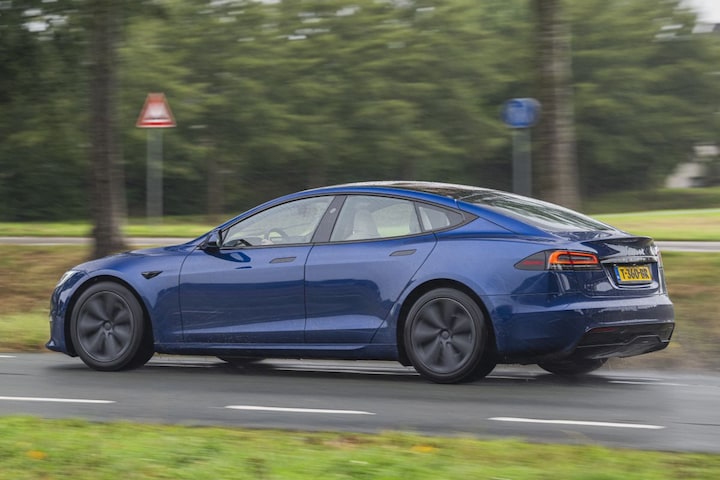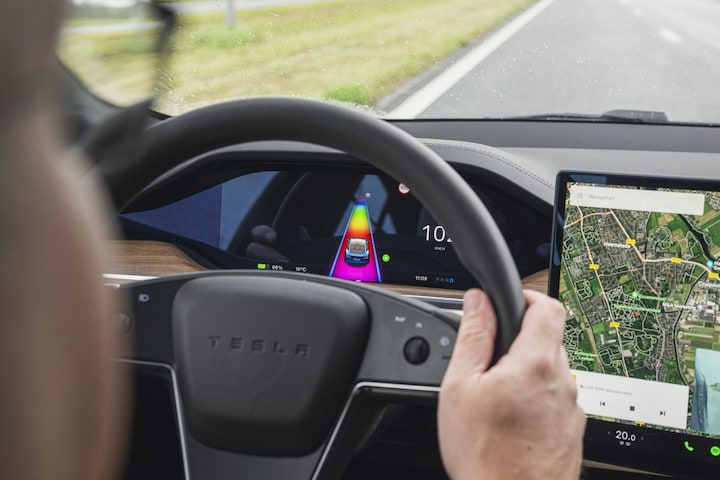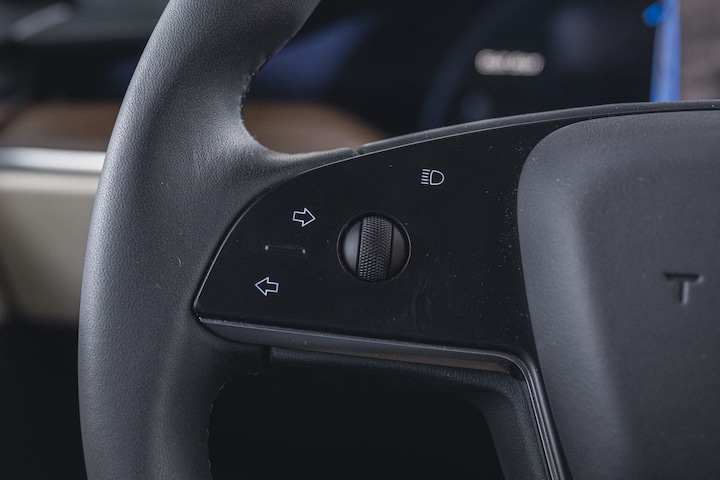Are you going for speed or endurance?

Tesla put the Model S back on the map this year with the insane Plaid version with more than 1,000 hp. You would almost forget that there is also a normal variant, although ‘normal’ can be put in quotes when you consider that the Tesla Model S Long Range has 680 hp. But also: a range of 634 km and with smaller wheels even over 700 km.
The Tesla Model S Long Range is broadly the same car as the Plaid, but with one less engine (two instead of three). It is less speed-hungry – even though it will accelerate to 100 in 3.1 seconds if you want it – and is more the serious travel car of the two. Tesla has scrapped all versions of the Model S with smaller batteries and less power and placed an absurdly fast car above them. So the version with 680 hp has become the entry-level model. By choosing 19-inch wheels instead of 20-inch you could increase the range by about 90 km to 723 km.

Speed or endurance
A drive back and forth to East Germany gives a good idea of the car’s capabilities. The first conclusion is that with such a large battery you do not have to meticulously plan your charging stops. Before you have used up that 600 or 700 kilometer range, you have certainly wanted to eat or go to the toilet. These are of course good times to use the fast charger. Cars with a smaller battery tend to determine your travel day for you, but with a net capacity of 95 kWh, the car will follow your schedule. Another conclusion: you can also drive much faster. Consumption with an EV increases drastically as you drive faster, but even if the range drops significantly, you can still go a long way before having to charge again. As a rider you have the choice of how best to use that enormous battery capacity: speed or endurance.

Anyone who simply drives within the speed limits and drives at a maximum of 140 to 150 km/h on the unlimited stretches results in an average consumption of about 20 kWh per 100 km. That’s very nice, because most other EVs have to drive much slower to achieve the same fuel consumption. The efficient engines and the sophisticated streamline are certainly paying off. If you really aim for the lowest possible consumption and stay below 100 km/h, consumption will drop towards 14 kWh/100 km and real hypermilers can still get below that.
The air suspension chassis makes the Model S a comfortable travel car. And, it’s not the point of this introduction, but if you want, the car is lightning fast.

New interior
The interior and exterior of the Model S have been revised for this year. On the outside, the differences are minimal and only visible to the connoisseur: different bumpers, no more chrome moldings and door handles and a changed layout of the rear lights. The differences are greater inside. The vertical screen made way for a horizontal variant, which can also be placed at an angle, so that it is aimed more at the driver, for example, or at the passenger seat if you want to watch a movie while charging. The operation of the multimedia system has been improved and remains logical. Takes some getting used to, but not inconvenient: there is no longer a lever or button for the gear, but you now also choose the direction of travel (or P position) via the touchscreen. The decision to declare the stems behind the steering wheel redundant and replace them with buttons on the steering wheel is incomprehensible. In particular, the fact that the direction indicator has become inaccessible at a roundabout is unacceptable and indirectly dangerous to others. The rear passengers now also have a screen on which they can log in to Netflix or Disney+.

Tesla Model S unsurpassed
When the Model S came along ten years ago, it was automatically the best choice, because there was simply no choice. Now he has to compete against very good cars from, for example, Mercedes-Benz, Porsche, Lucid and BMW. Despite all the innovations, it still looks a bit outdated, but its efficiency on the one hand and its performance on the other remain unsurpassed.
– Thanks for information from Autoweek.nl